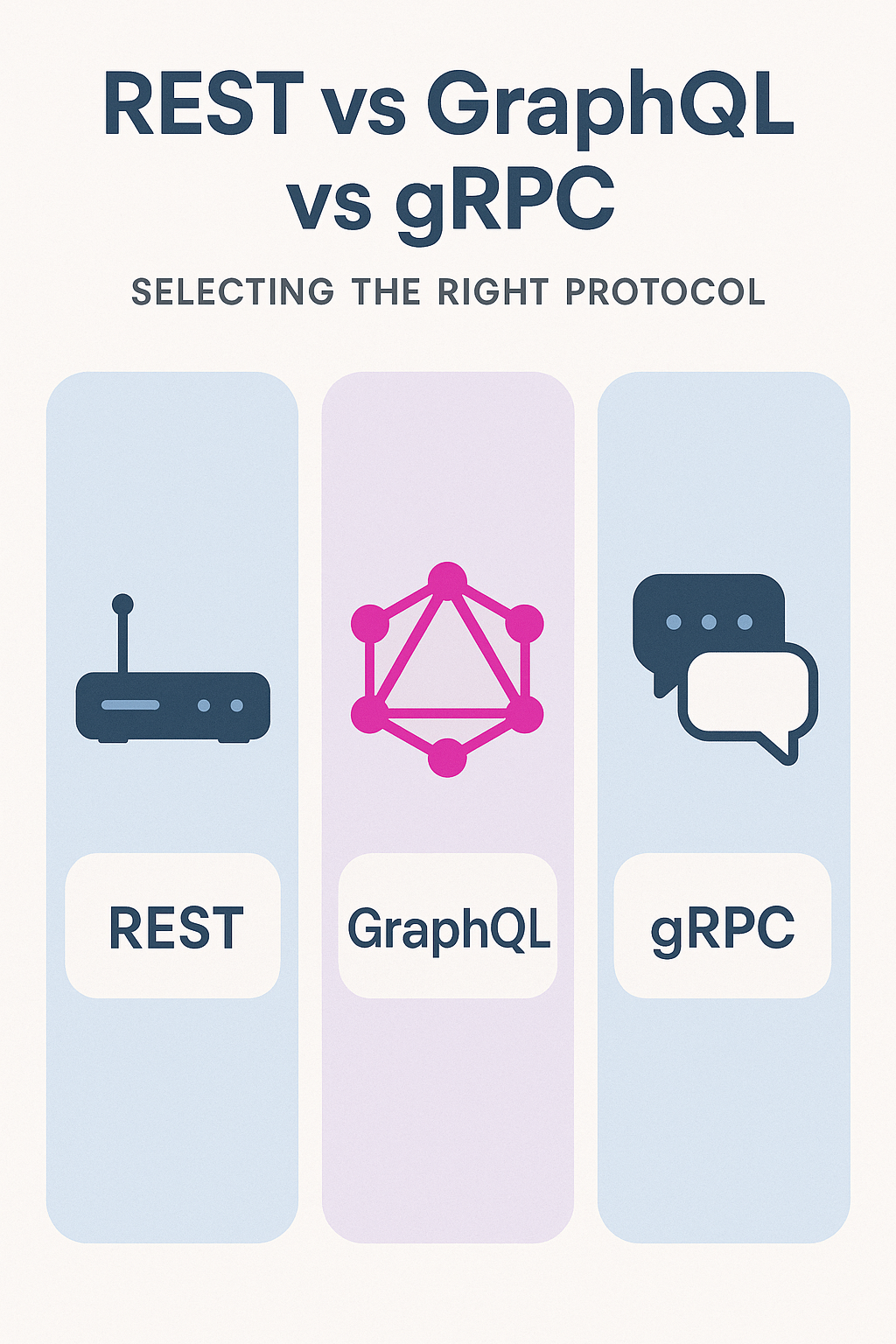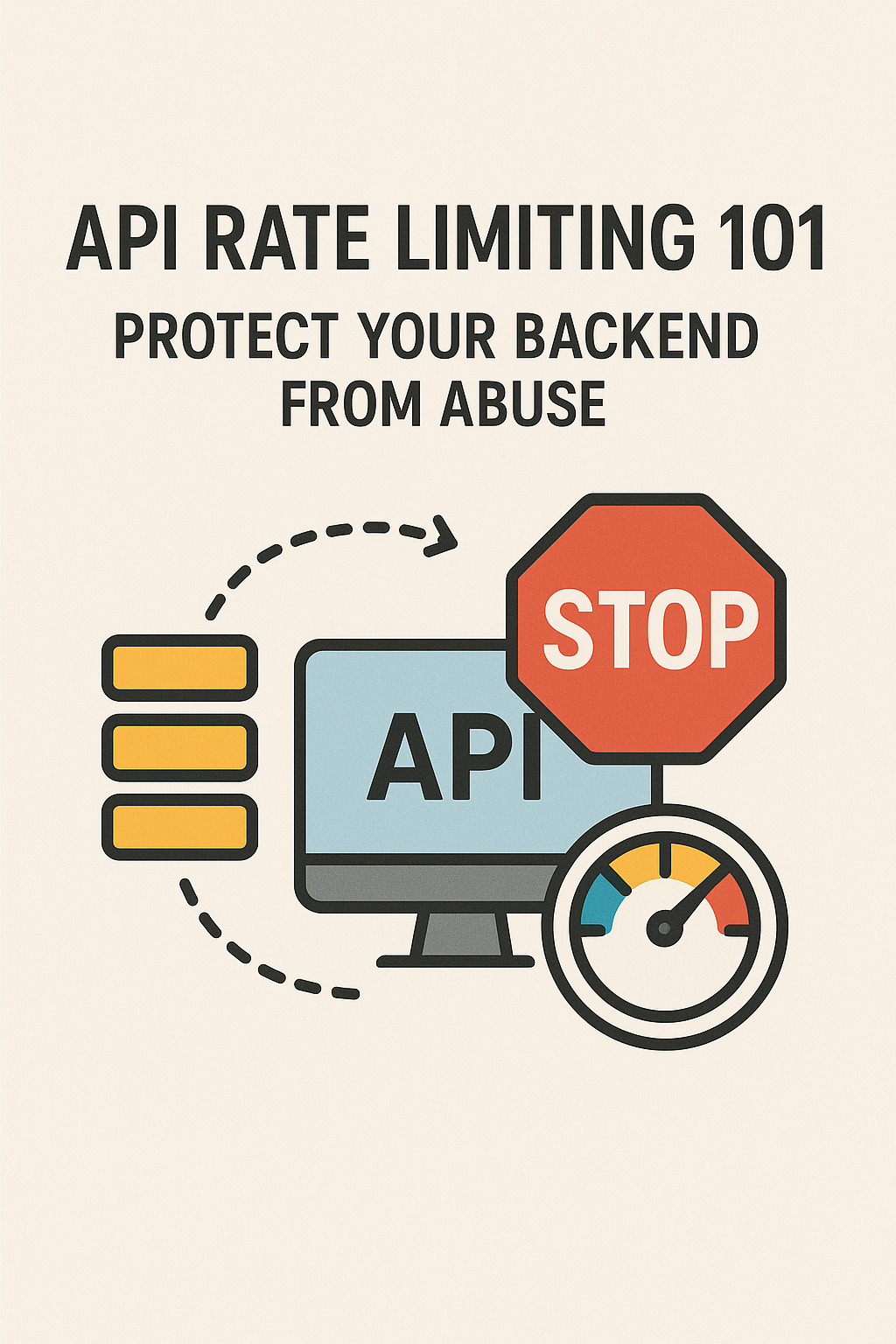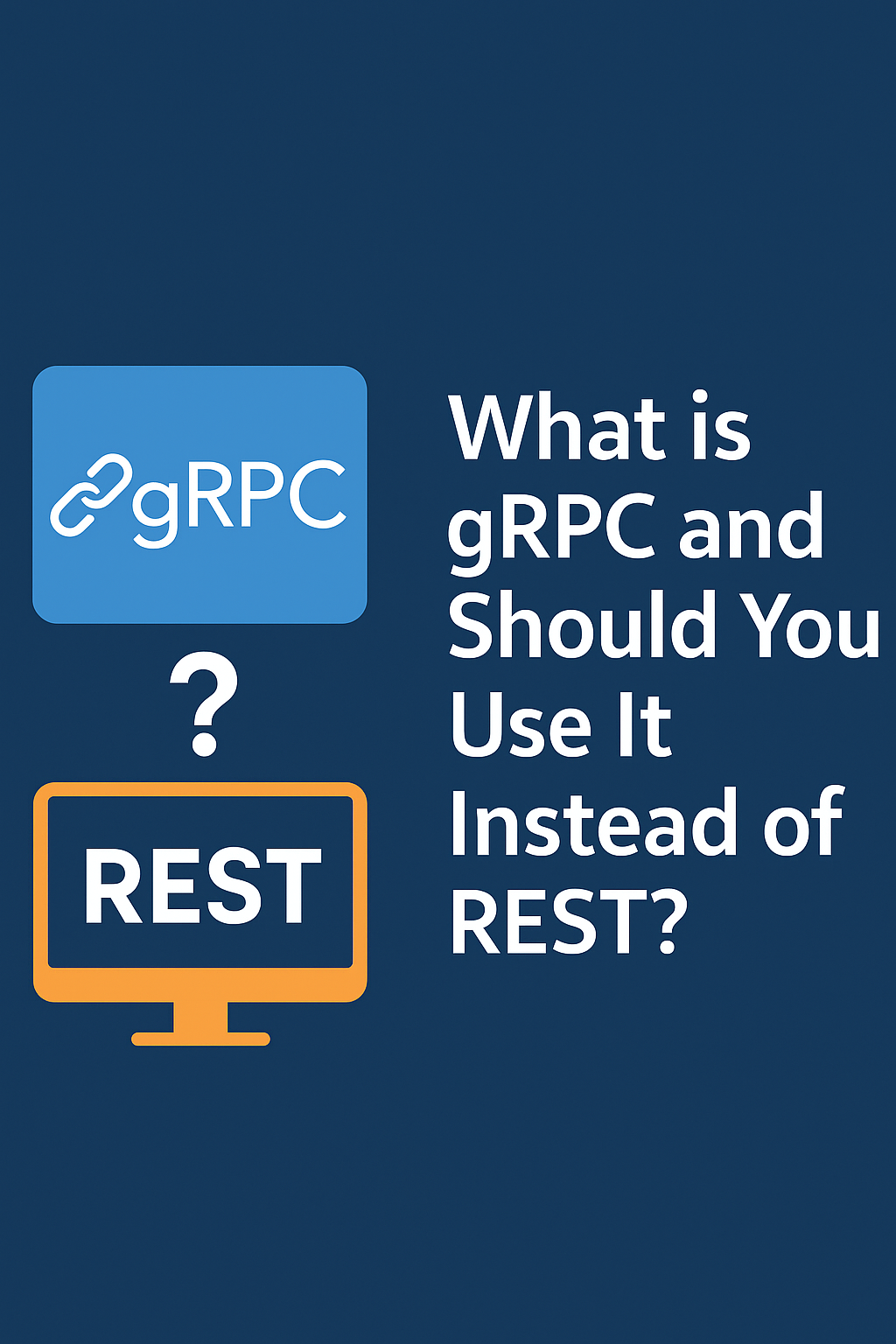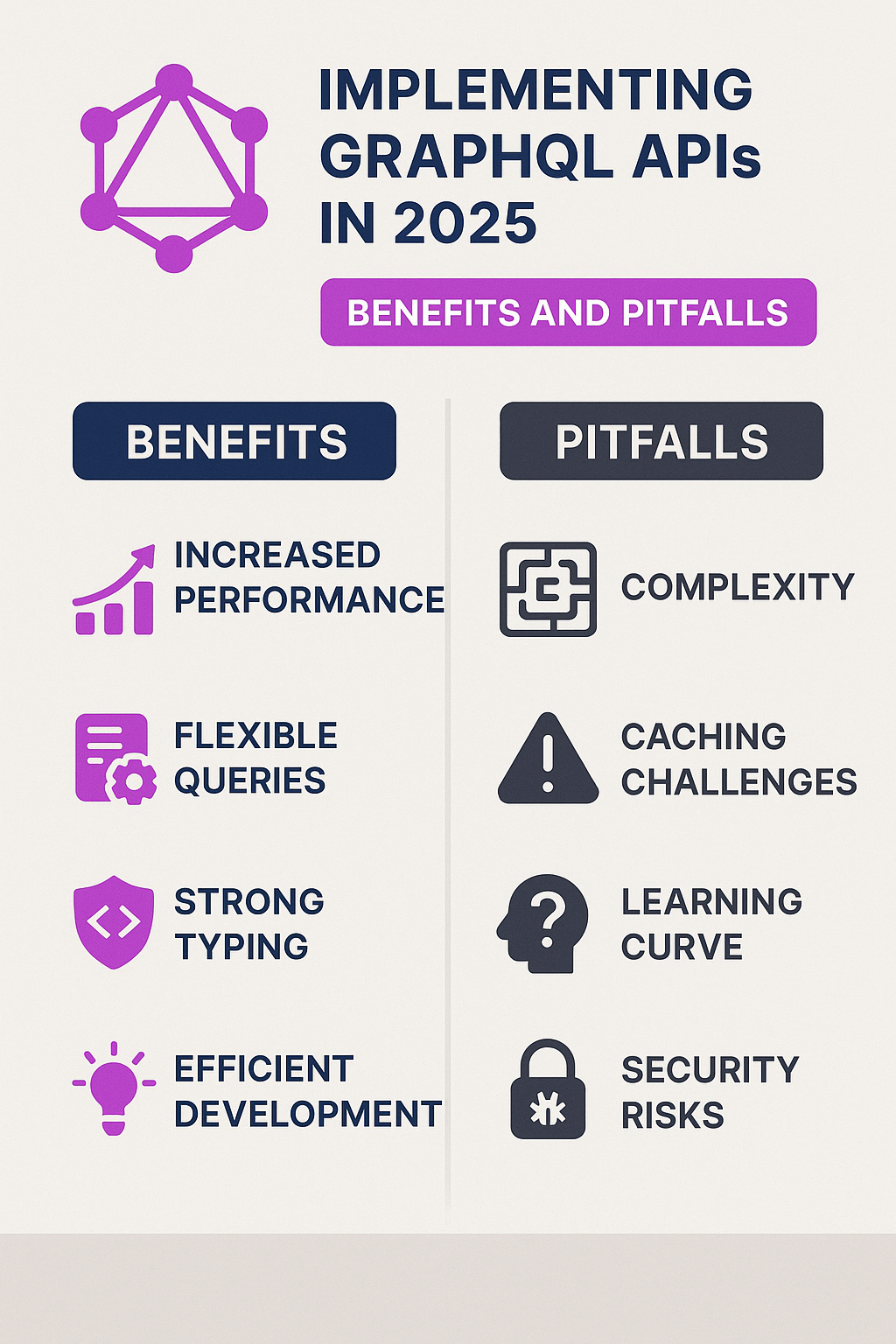
Introduction
Choosing the right communication protocol is one of the most important architectural decisions in modern software development. REST has been the traditional default, GraphQL has risen as a flexible alternative, and gRPC is gaining momentum for high-performance distributed systems.
In this guide, we’ll compare REST, GraphQL, and gRPC across key dimensions — performance, flexibility, tooling, and developer experience — to help you decide which protocol fits your project in 2025.
REST: The Classic Standard
REST (Representational State Transfer) has powered the web for decades. It uses HTTP verbs (GET, POST, PUT, DELETE) to expose resources in a predictable way.
Benefits:
- Universally supported and understood.
- Easy to implement with standard web tools.
- Works well with caching (e.g., CDN, browser cache).
- Strong ecosystem of client libraries and frameworks.
Pitfalls:
- Over-fetching and under-fetching data.
- Lacks strong typing (unless paired with OpenAPI/Swagger).
- May require multiple round-trips for complex data needs.
REST is a safe choice for public APIs, CRUD services, and applications where simplicity matters.
GraphQL: Flexibility First
GraphQL was introduced by Facebook to solve REST’s over-fetching problem. Instead of multiple endpoints, it exposes a single endpoint where clients can query exactly the data they need.
Benefits:
- Precise data fetching reduces bandwidth waste.
- Strongly typed schema improves developer experience.
- Great for front-end teams working with diverse data.
- Growing ecosystem (Apollo, GraphQL Yoga, Hasura).
Pitfalls:
- Performance issues with overly complex queries.
- Caching is harder compared to REST.
- Requires more upfront schema design.
- Overhead of query parsing and validation.
GraphQL shines in client-heavy apps like SPAs, mobile apps, or multi-platform projects where UI teams need autonomy.
gRPC: Performance at Scale
gRPC, created by Google, is built on HTTP/2 and uses Protocol Buffers (Protobuf) for serialization. It is designed for low-latency, high-performance communication between microservices.
Benefits:
- Binary serialization is faster and more compact than JSON.
- Native support for streaming (bidirectional, client, server).
- Strong contracts via
.protodefinitions. - Excellent for polyglot microservice environments.
Pitfalls:
- Steeper learning curve.
- Debugging is harder compared to human-readable JSON.
- Limited browser support (though gRPC-Web helps).
- Tooling is not as universal as REST.
gRPC is ideal for microservices, IoT, and real-time systems where performance and scalability are critical.
Side-by-Side Comparison
| Feature | REST | GraphQL | gRPC |
|---|---|---|---|
| Data Fetching | Fixed endpoints | Flexible queries | Strongly typed contracts |
| Performance | Good, but JSON is heavy | Depends on query complexity | Excellent (binary, HTTP/2) |
| Typing | Optional (OpenAPI) | Strong typing via schema | Strong typing via Protobuf |
| Caching | Straightforward | More complex | Built-in streaming, less caching |
| Best Use Case | CRUD APIs, public endpoints | Client-driven applications | High-scale microservices |
Choosing the Right Protocol in 2025
- Pick REST if you want simplicity, interoperability, and wide adoption.
- Pick GraphQL if your app has multiple clients (mobile, web, IoT) needing flexible queries.
- Pick gRPC if performance and scalability are your top priorities in distributed systems.
Many teams even combine protocols: REST for public APIs, GraphQL for front-end integration, and gRPC for internal microservice communication.
Conclusion
REST, GraphQL, and gRPC each bring unique strengths to the table. In 2025, no single protocol is a “one size fits all” solution — the best choice depends on your project’s requirements for performance, flexibility, and ecosystem support.
For a deeper dive into modern API design, you might also want to read Implementing GraphQL APIs in 2025: benefits and pitfalls.



